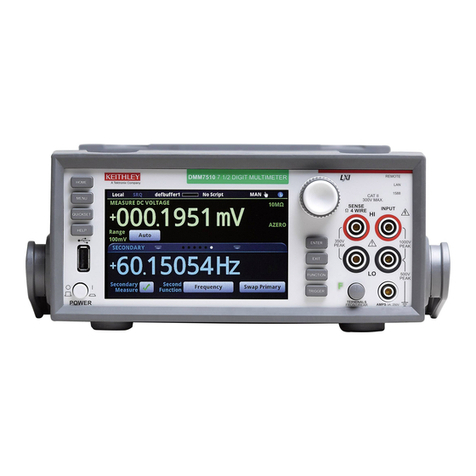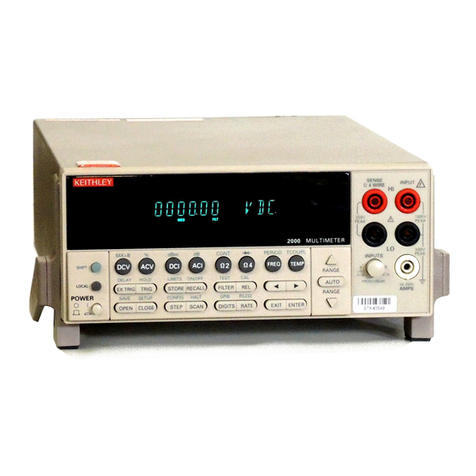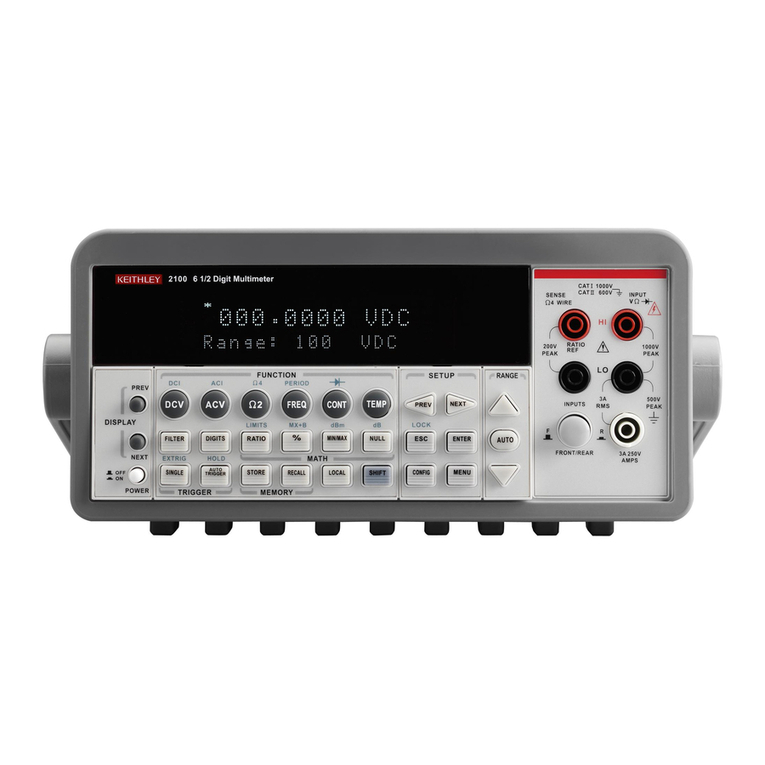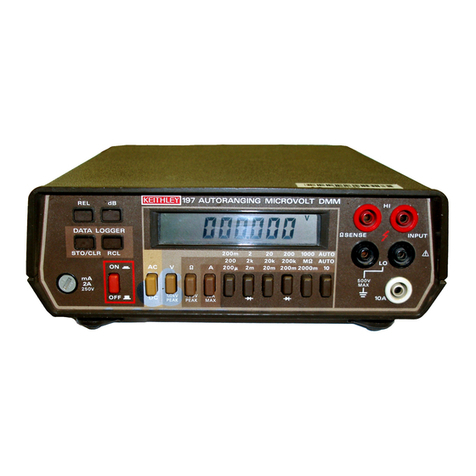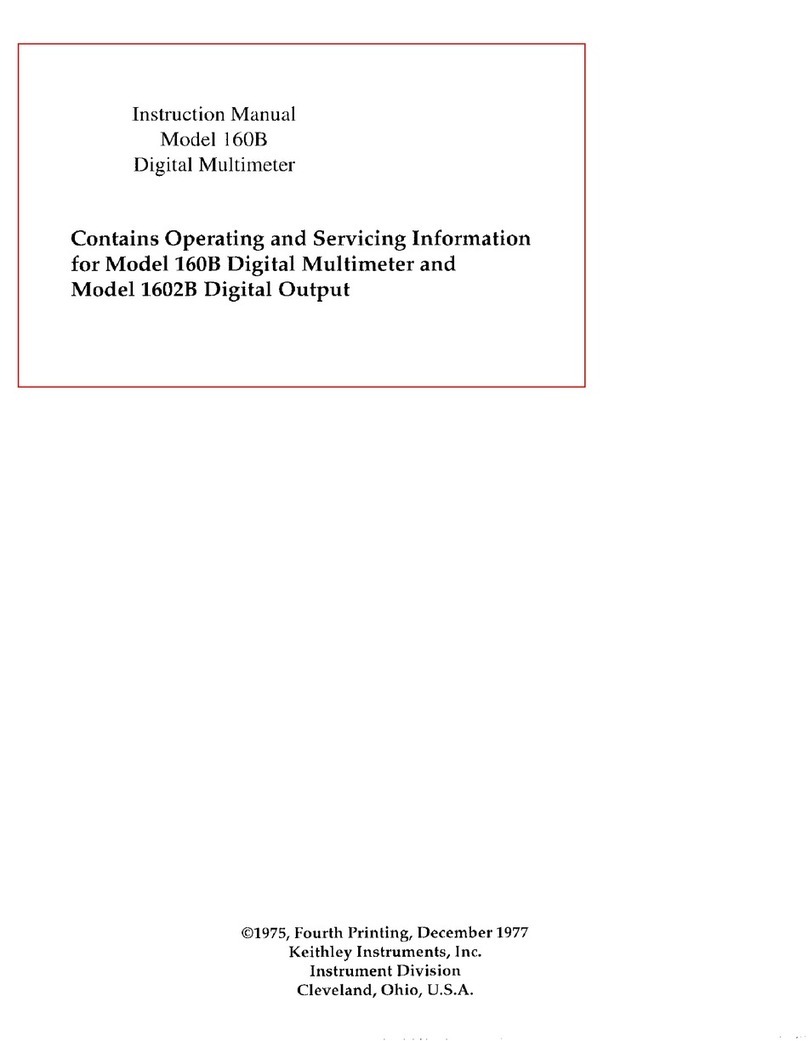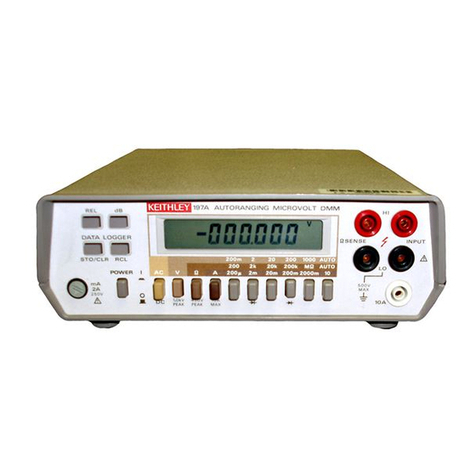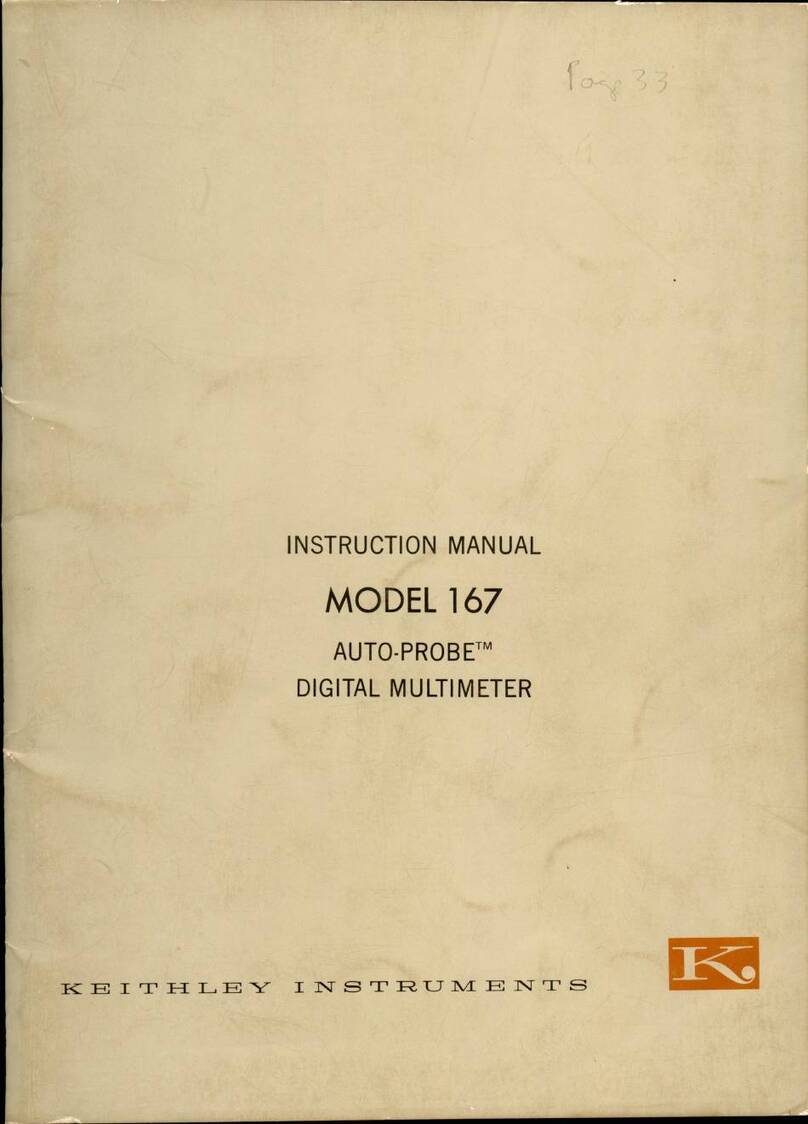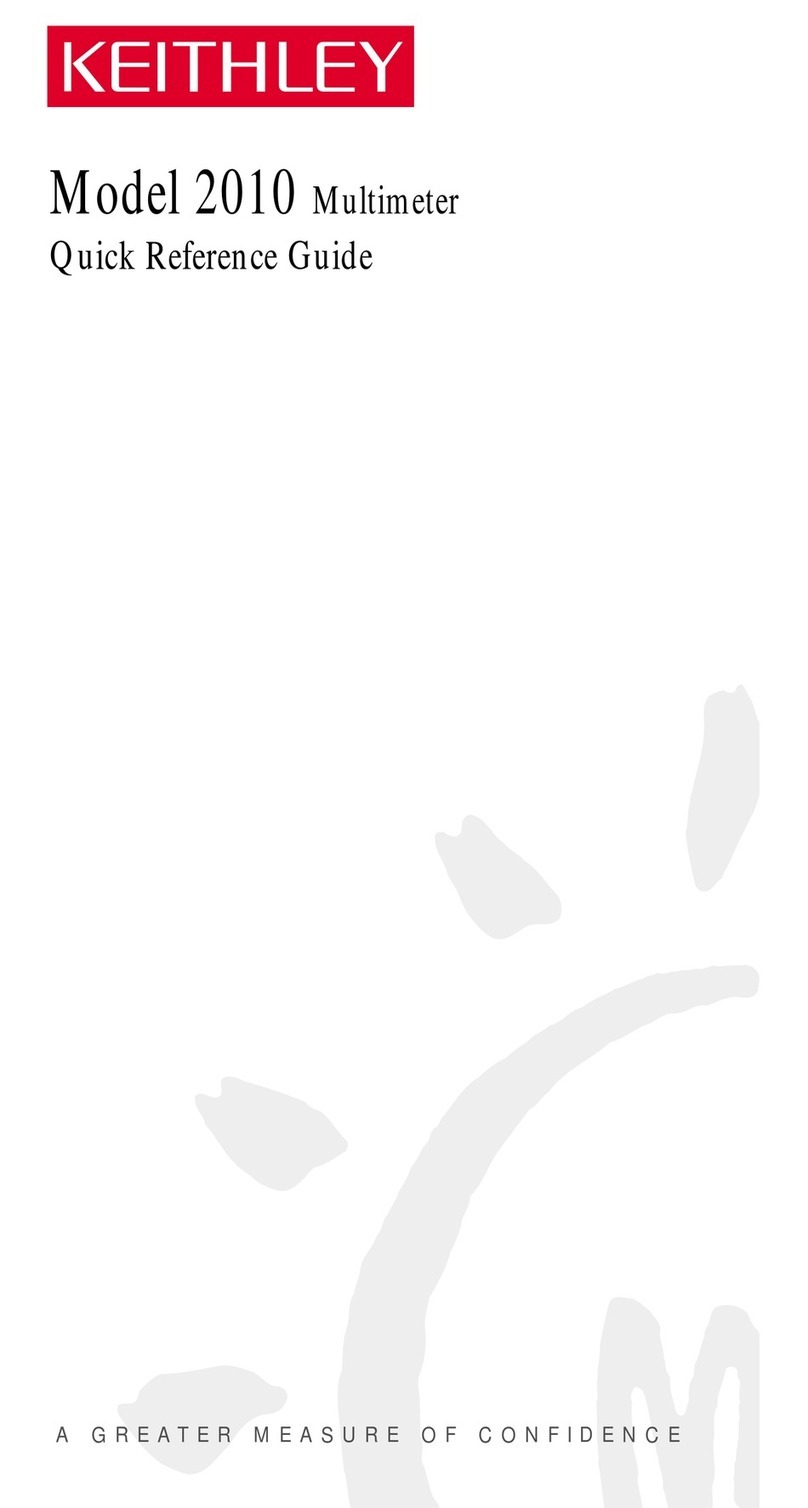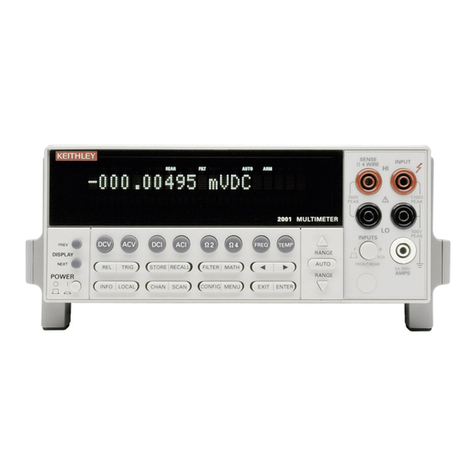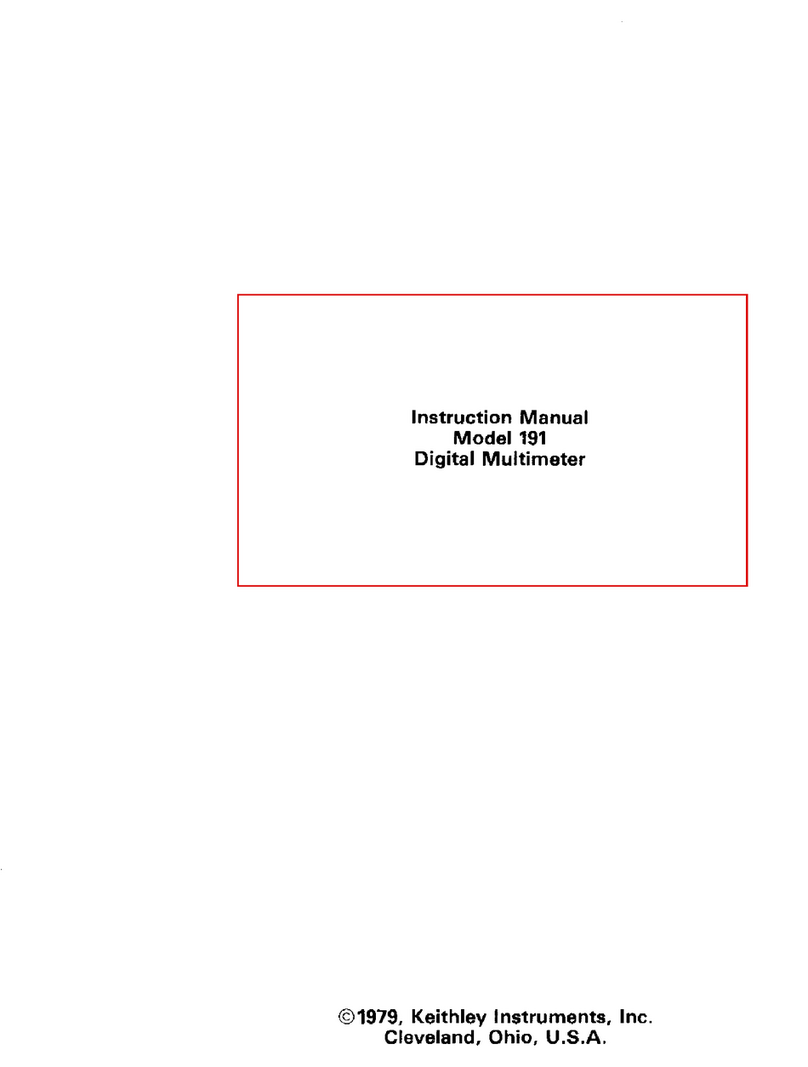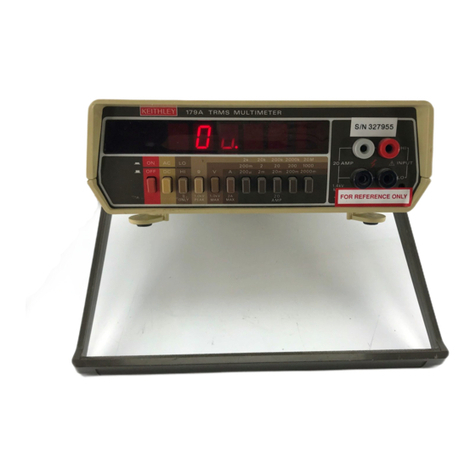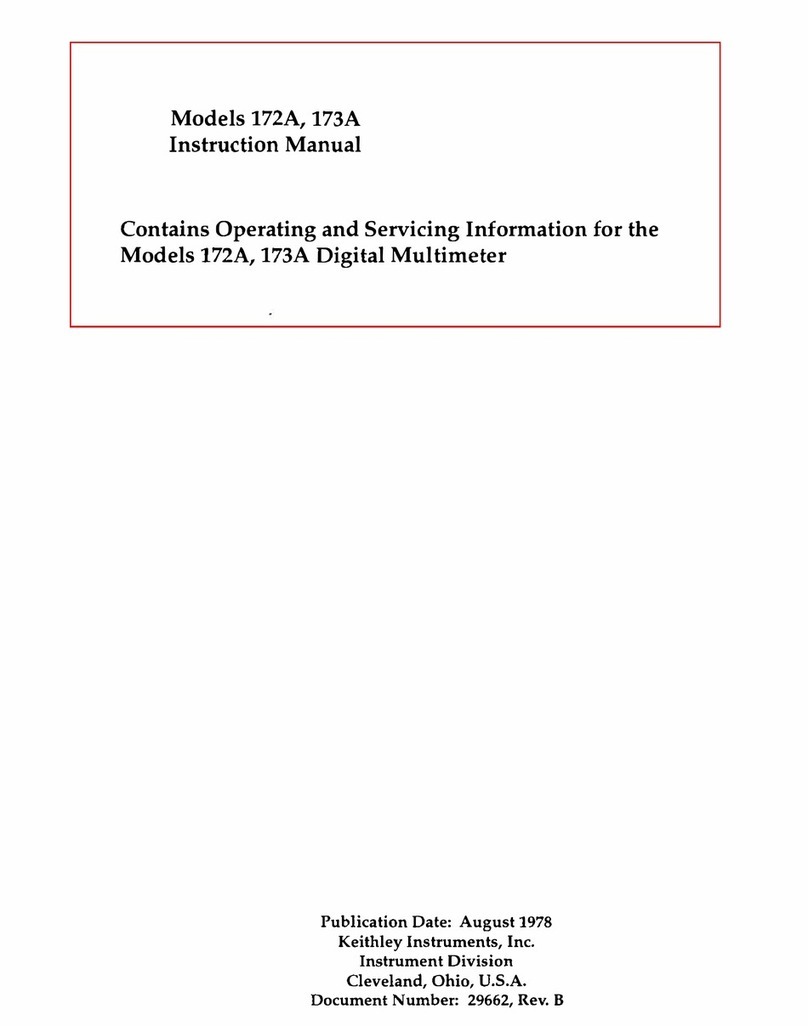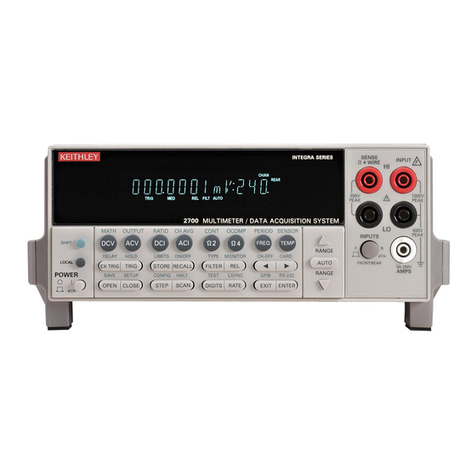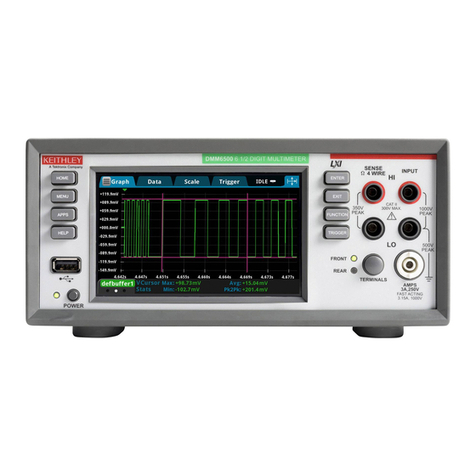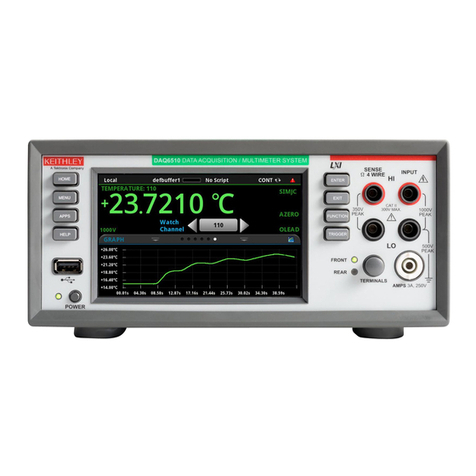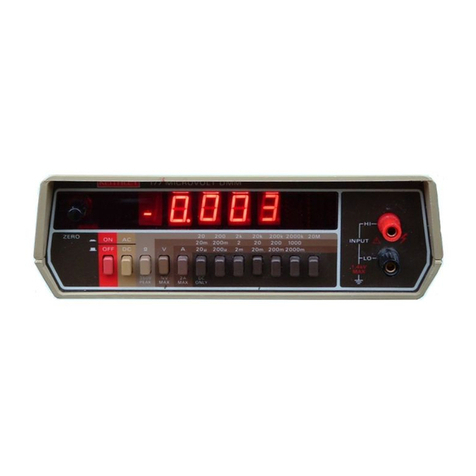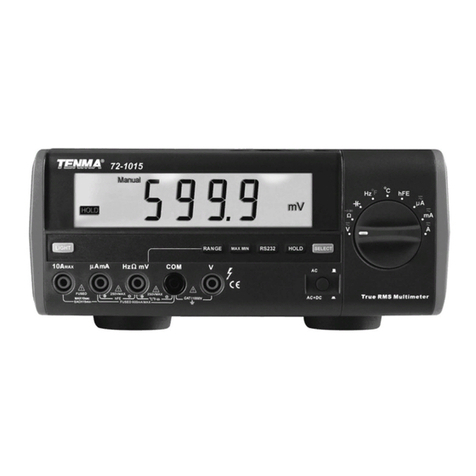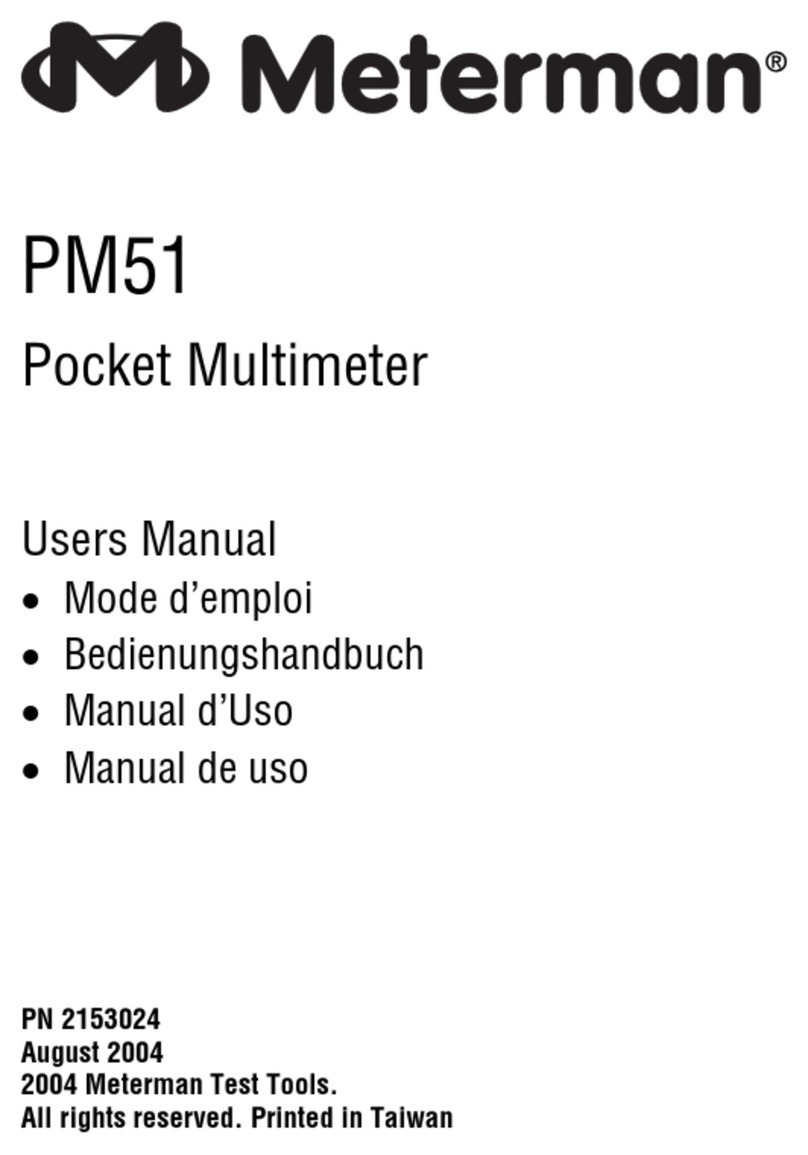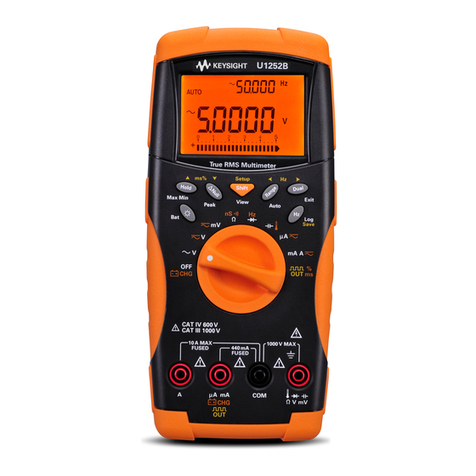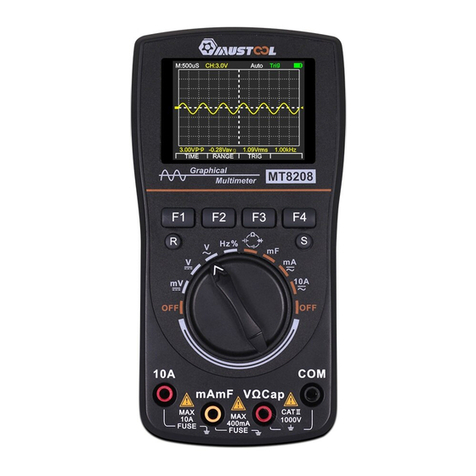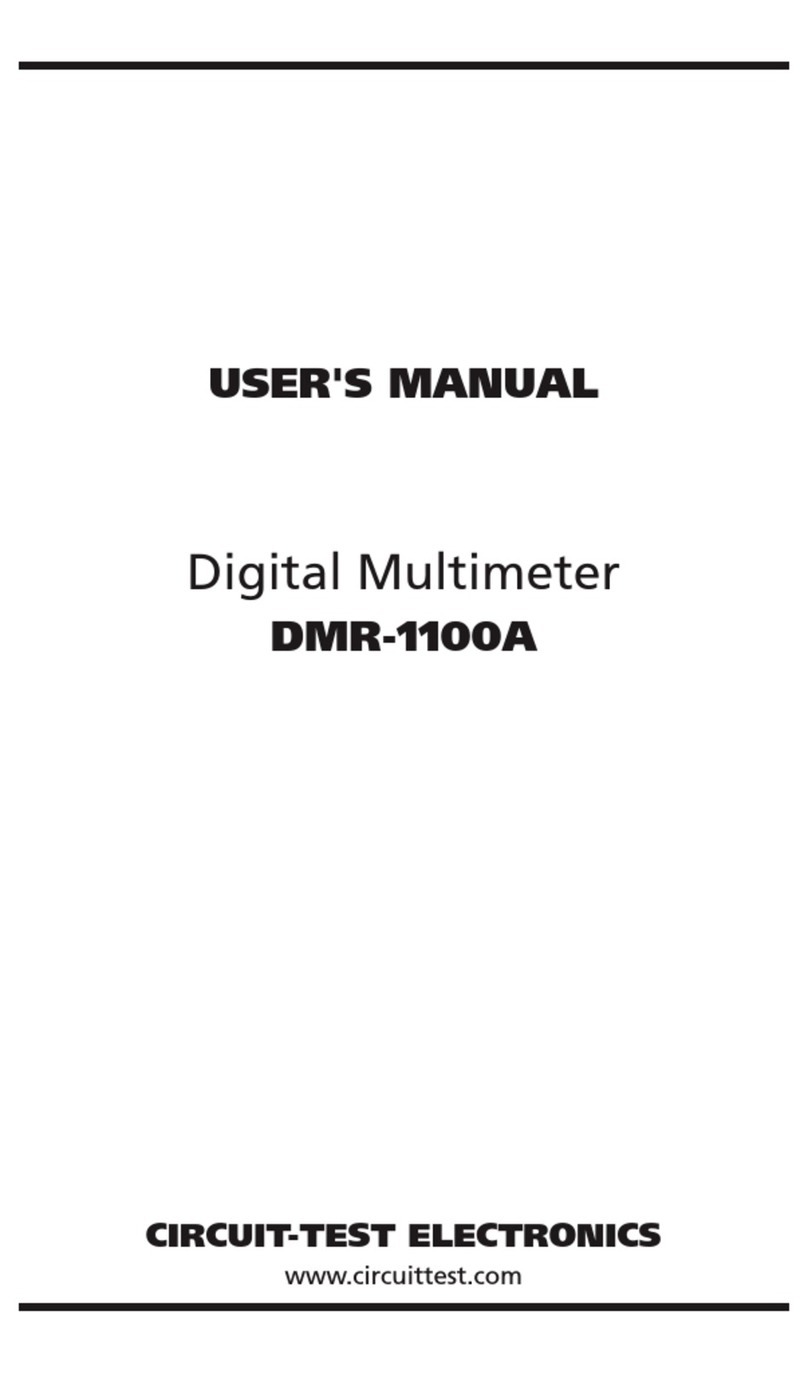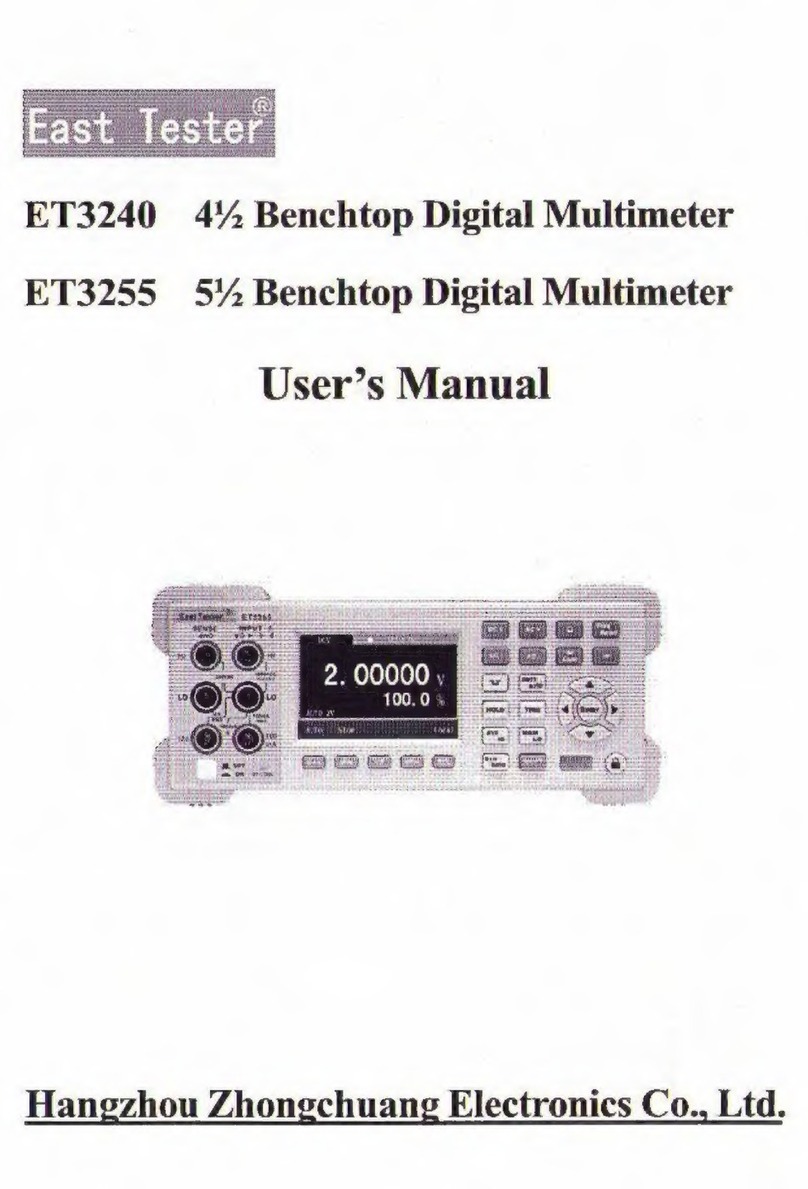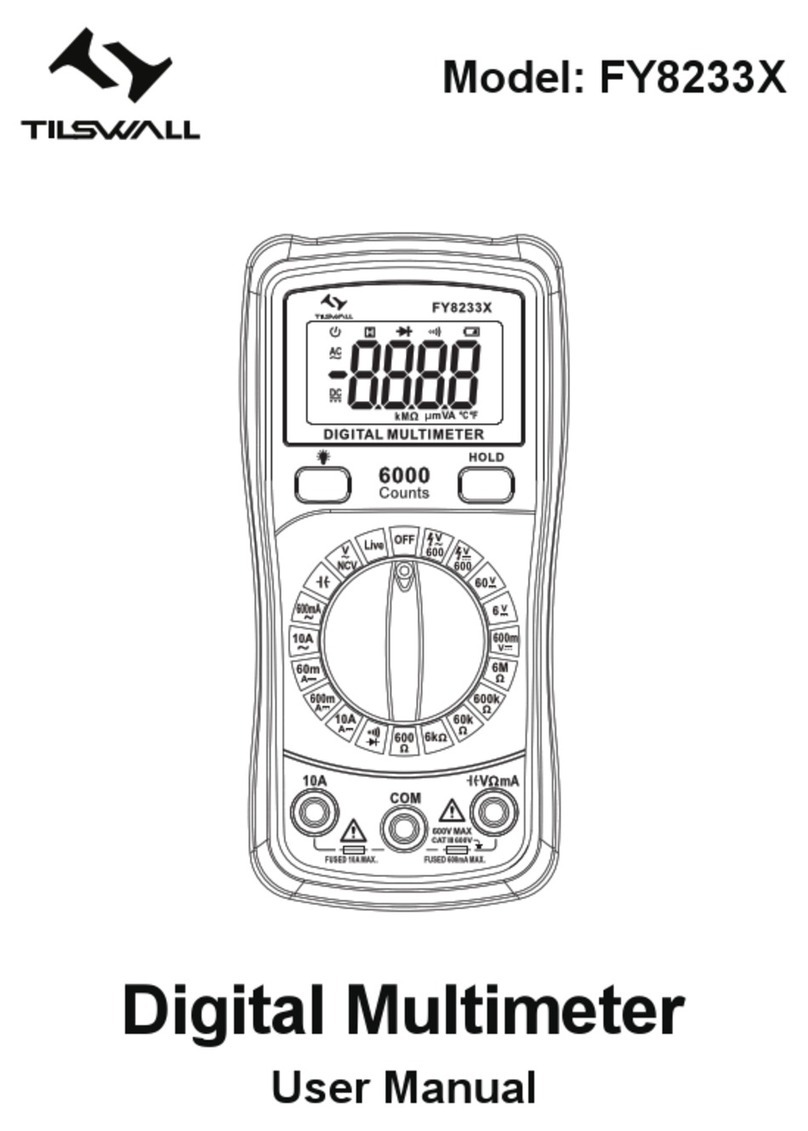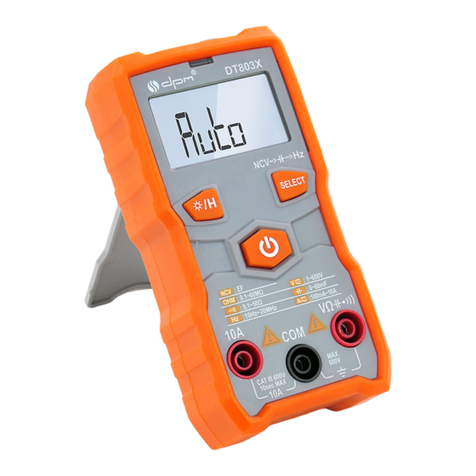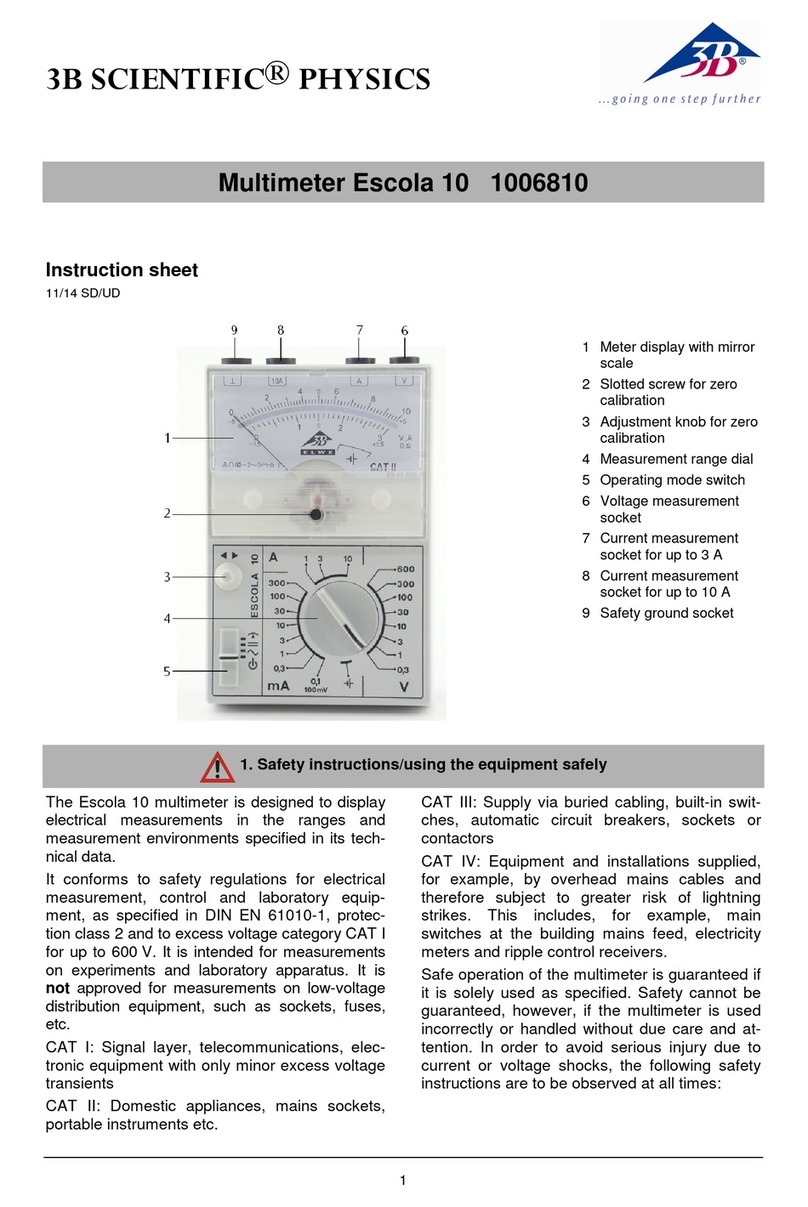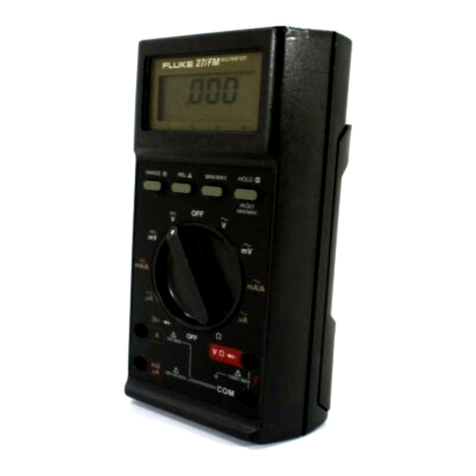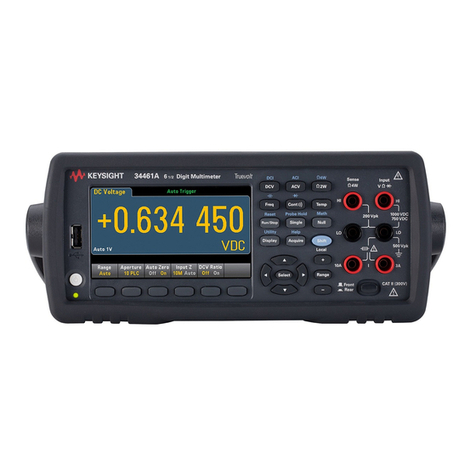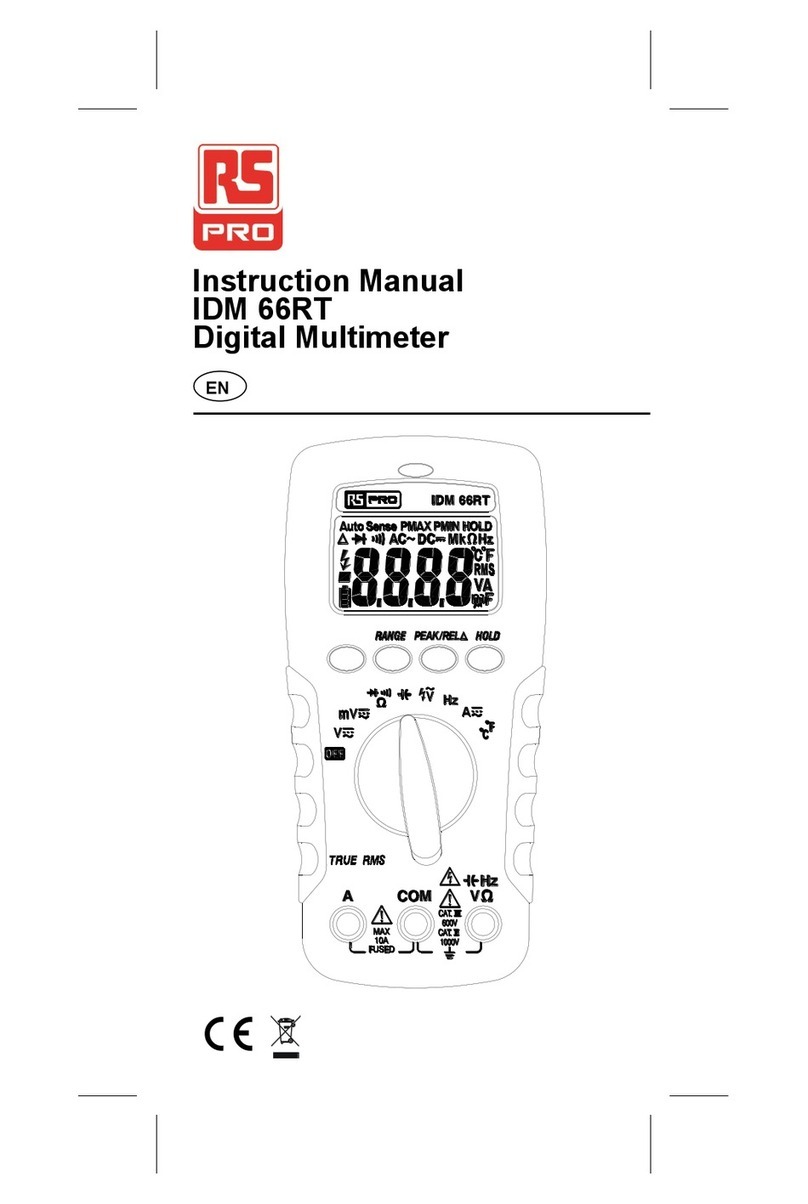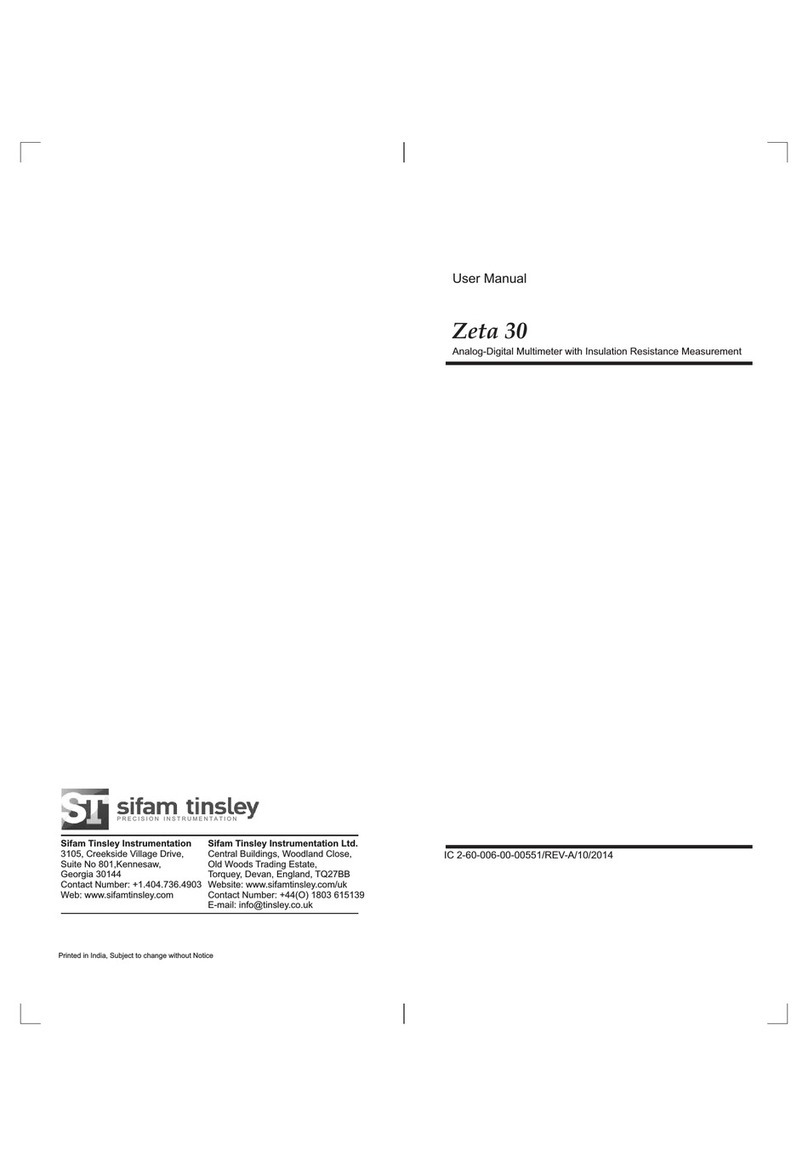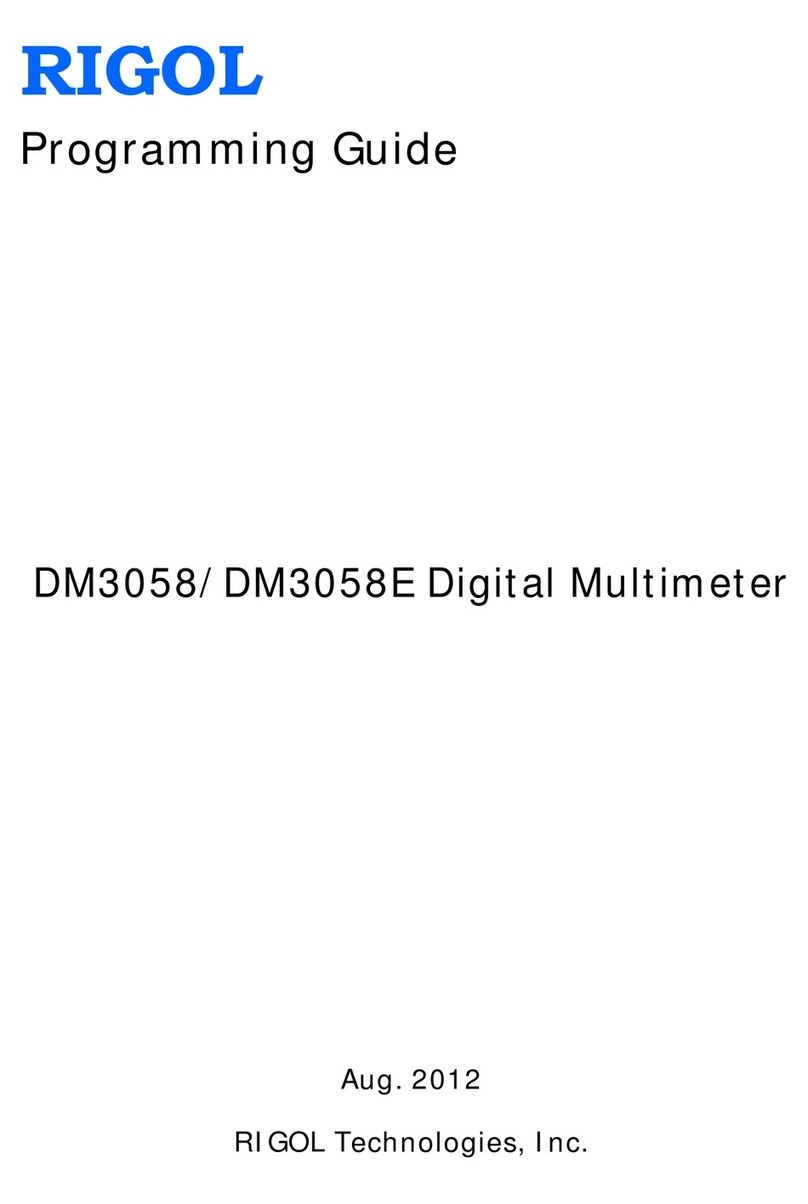
rent mode. When the AMPS button is depress@, the indi:
cator above it tums on.
AC-When the Model 1959 is installed, the AC button
places the instrument in ths AC voltage or currant mode,
depending on the selection performed with the VOLTS or
AMPS buttons. Depraasing the AC bunon once turns the
AC indicator on; the instrument will measure en AC voltage
or current in this mode. Depressing the AC button a second
time turns the AC indicator off; the instrument measures a
DC voltage or current in this mode. Pressing AC whan in
the OHMS mode, places the instrument in the ACV mode.
3. RANGE-The RANGE buttons select the operating ranges
of the instrument. The range in uss can ba determined from
the dbplav dscknal Point and exponent value as described
in paragraph 2.6.2.
AUTO-The AUTO button places the instrument in the
autoranging mode. The instrument is operating in this mode
when the AUTO indicator is on. When in the autoranging
mode, the instrumant automatically selects the best range
to msasure the applied input signal.
DOWN-Each time the DOWN button is operatad, the in-
strument moves downrange one increment.
UP-Each time the UP button is operated. the instrument
moves uprange one increment.
4. MODIFIERS-The MODIFIER buttons control the zero,
filter and raaolutk~ modes of the instrument as described
b&w.
ZERO-The ZERO button controls a zero offset for baseline
suppression. Depressing the ZERO button once enables
zero as indicated by the ZERO light. Pressing ZERO a
second time disables the zero mode.
FILTER-The FILTER button controls the internal filter.
Pressing this button’once enables the filter: the indkator
light will turn on to show that the filter is enabled. Depress-
ing the FILTER button a second time disables the filter.
RESOLN-The RESOLN button controls the display
resolution. Each time this button is operated, the resolution
changes to the eltamate mode.
5. TRIG-The TRIG button is used to trigger readings when
the instrument is in the front panel trigger mode. The TRIG
button will be operational only if the TRIG indicator light is
on. Tha instrumant may be placad in the correct trigger
mode through front panel Program 9 or through IEEEcom-
mands. One reading will be processed each time the TRIG
button is operated.
6. PROGRAM-The PROGRAM buttons are used with the
front panel programs as described in Section 3.
PROM-The PROM button is used as the first step in
entering front panel programs 0 through 9.
RECALL/ENT-The RECALL/ENT button is used to enter
and recall dare associated with the front panel programs.
2.2.2 Terminals
The terminals are used to connect the Model 195 to the
voltage, current, or resistance to be measured. Note that the
teninals are duplicated on the rear panel and that the rear
panel INPUTS swftch must be in the proper position for the
front panel terminals to be active.
1. VOLTS OHMS-The VOLT OHMS terminals are used
when making DC and AC (with the Model 1950) voltage
mmSummnt8
and resistance measurements. The HI ter-
minal is considered to be positive with raspact to the LO tar-
minal when measuring DC voltage; the LO terminal is
isolated from chassis gmund.
2. OHMS SENSE-The OHMS sense terminals are usad
when making &terminal resistance measurements.
3. AMPS-The AMPS terminal is used in conjunction with
the Model 1950 option to make DC and AC current meas-
urements.
2.2.3 Ciapley and Indicators
The function of the display and indicators is described below.
1. Display-The display consists of a 5% digit mantissa and a
single digit exponent. Both the mantissa and exponent usa
a leading minus sign to indicate negative’ valuaa. The sign
on the exponent changes to + for xero or positive values.
The range in use may ba determined from the position of
the decimal point and the exponent value as described in
paragraph 2.52. The flashing rate of the decimal point in-
dicates the conversion rate.
NOTE
The display will bs in the 5y2 digit mode upon
power-up.
2. IEEE Status Indicators-The REMOTE, TALK and
USTEN indicators are used when programming the instru-
ment over the IEEE-488 bus. Refer to Section 4 for oom-
plets IEEE programming information. These status lights
am not operational during front panel instrument operation.
2.24 Tilt Bail
The tilt bail, which is located on the bottom cover of the in&u-
mant, is useful for elevating the front of the instrument to a
convenient viewing height. To extend the bail, first rotate it
90“ away from the bottom cover and push down on the legs to
lock it into place. To retract the bail, pull the legs away from
the bottom cover and.then rotate the bail until it is flush with
the bottom cover.
2.3 REAR PANEL FAMILIARI2ATION
Figure 2-2 shows the rear panel layout of the Model 195.
2-2



















